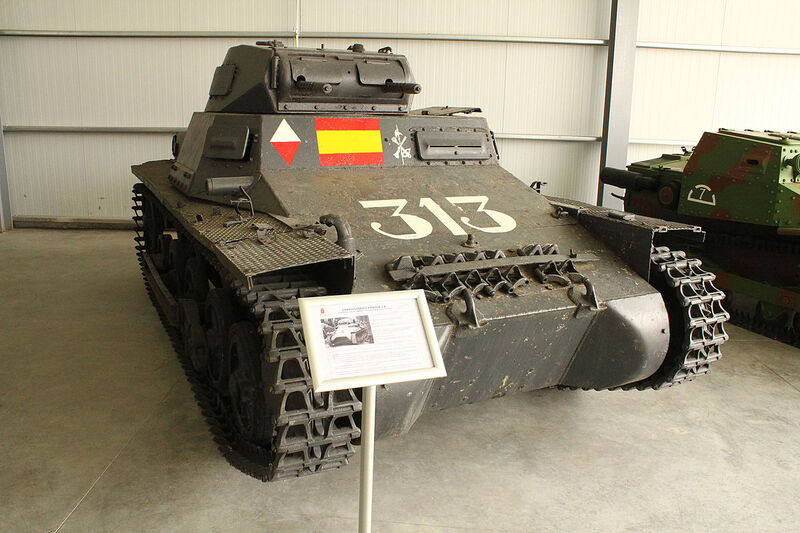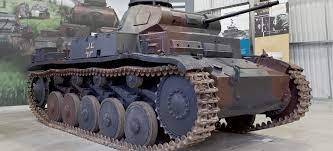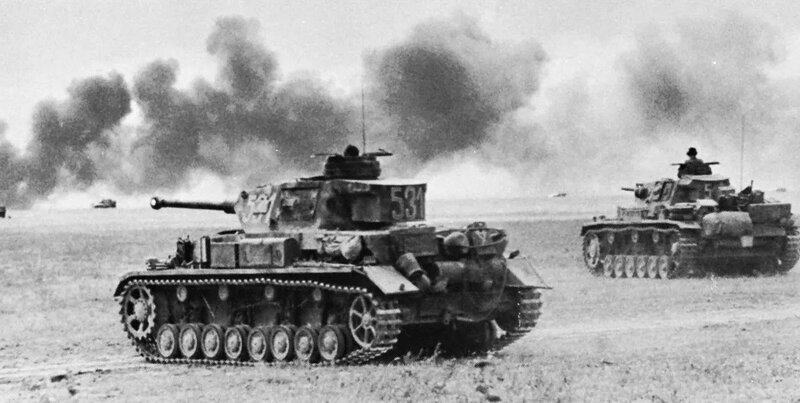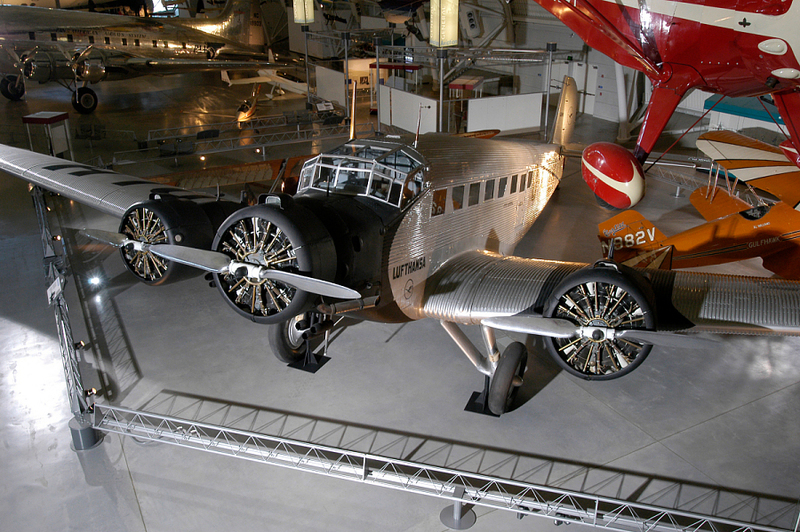Armor and Medicine
At the start of the Spanish Civil War in July of 1936, Franco requested the support of both Adolf Hitler (1889–1945) and Benito Mussolini (1883–1945). Both obliged and sent a variety of different weapons, supplies, and even troops. Hitler organized and sent the Condor Legion, a German battalion with new weapons, tanks, and planes, to assist Franco. The real reason they were there, however, was to develop the blueprint for the German military. The Spanish Civil War, in Mussolini's and Hitler's eyes, was the perfect proving ground for World War II. Without Spain, the two would not be going into World War II with much experience and advancement.
One such vehicle that was brought into service under the Condor Legion was the PanzerKampfwagen I, the first mass-produced German tank. It was lightly armored and armed with only two MG-34 machine guns. The crew consisted of only two, with a driver and a gunner/commander. Shown below is an example that did serve in Spain; note the nationalist flag.
The Condor Legion learned a lot from the failures of the Panzer I—failures that would be present in WW2 if it were not for the extensive combat testing. They learned that, for one, they did not send enough against enemy forces and without enough support. They also observed that the armor was inadequate against the Russian 45mm guns put onto their BT-5 and T-26 tanks. These remarks were put into newer designs that would roll into Poland in 1939. There were three designs, to be specific, taken from the original Panzer I, and they were the Panzer II, III, and IV. Below is an image of the Panzer II, a direct upgrade of the Panzer I.
The PanzerKampfwagen II was up-armored and gunned with a new 20mm auto cannon, which took inspiration from the Spanish-modified Panzer I's with upgraded 20mm guns. It was still a light tank, however, and remained in the recon role of the battlefield. The Panzer III and IV, however, were medium tanks. Below is a photo of the Eastern Front during World War II. The two panzers would serve very well in the early years of the operation, thanks to the lessons learned in Spain.
The Panzer III was designed with balance in mind. Combining adequate armor, weaponry, and mobility, it would serve on many fronts and be upgraded into many variants and assault guns, like the Stug III. The Panzer IV was far more successful and served for the entirety of the war since it was able to combat later Soviet tanks. All of these tanks, including the earlier Panzer I, were instrumental in the Blitzkrieg, a tactic that would decimate Europe.
Such tactics and discoveries, however, led to casualties in the field. One major problem that both sides of the Spanish Civil War faced was the lack of good medical supplies and equipment. Some troops even had wounds filled with concrete. This led to the Nazis' testing new methods of medicine not only in the field but also in the air.
Above is an image of the Junkers Ju 52. This one may be a passenger model, but other variants include bombers, troop transporters, and air ambulances. The Condor Legion found that survivability in Spain when injured was far lower than in a hospital in Berlin. The solution was to fly injured troops to Berlin using the first organized air ambulances. Testing what altitudes are best or if medicines still work at certain heights was all figured out by the Nazis in Spain—research that is still valuable today. The combonation of both medicine, armored forces, and later aircraft led to the refining and finishing touches of Blitzkrieg, making the Condor legion the most important outside force in the Spanish Civil War.
Air ambulances were not the only discoveries in the air, however. The name Condor Legion should hint at what the main focus of the tests really was. The German Air Force tactics in testing.



